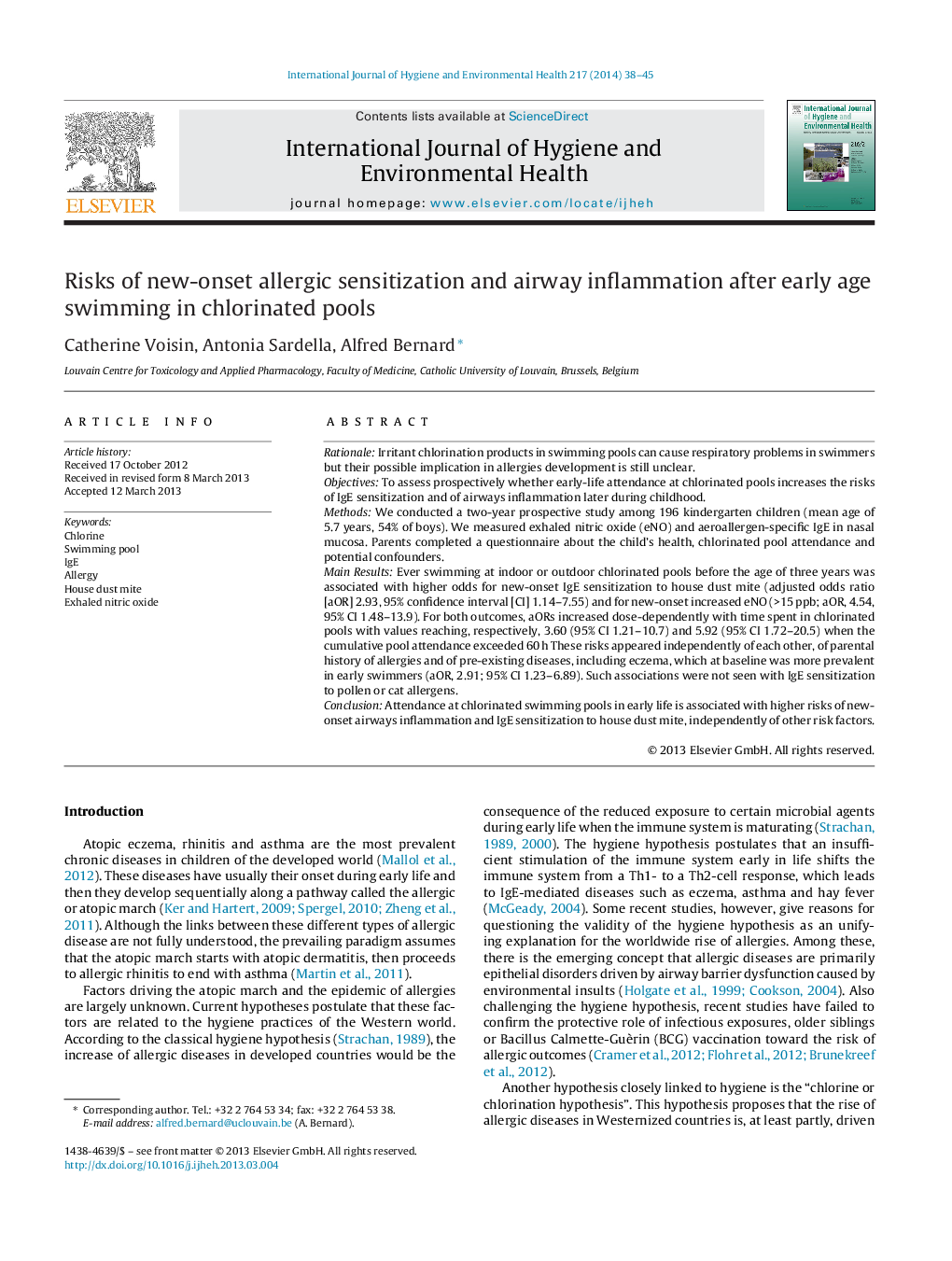| Article ID | Journal | Published Year | Pages | File Type |
|---|---|---|---|---|
| 2588529 | International Journal of Hygiene and Environmental Health | 2014 | 8 Pages |
RationaleIrritant chlorination products in swimming pools can cause respiratory problems in swimmers but their possible implication in allergies development is still unclear.ObjectivesTo assess prospectively whether early-life attendance at chlorinated pools increases the risks of IgE sensitization and of airways inflammation later during childhood.MethodsWe conducted a two-year prospective study among 196 kindergarten children (mean age of 5.7 years, 54% of boys). We measured exhaled nitric oxide (eNO) and aeroallergen-specific IgE in nasal mucosa. Parents completed a questionnaire about the child's health, chlorinated pool attendance and potential confounders.Main ResultsEver swimming at indoor or outdoor chlorinated pools before the age of three years was associated with higher odds for new-onset IgE sensitization to house dust mite (adjusted odds ratio [aOR] 2.93, 95% confidence interval [CI] 1.14–7.55) and for new-onset increased eNO (>15 ppb; aOR, 4.54, 95% CI 1.48–13.9). For both outcomes, aORs increased dose-dependently with time spent in chlorinated pools with values reaching, respectively, 3.60 (95% CI 1.21–10.7) and 5.92 (95% CI 1.72–20.5) when the cumulative pool attendance exceeded 60 h These risks appeared independently of each other, of parental history of allergies and of pre-existing diseases, including eczema, which at baseline was more prevalent in early swimmers (aOR, 2.91; 95% CI 1.23–6.89). Such associations were not seen with IgE sensitization to pollen or cat allergens.ConclusionAttendance at chlorinated swimming pools in early life is associated with higher risks of new-onset airways inflammation and IgE sensitization to house dust mite, independently of other risk factors.
